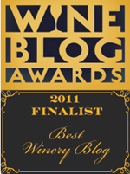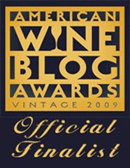July 2008 Archives
|
I swore it wouldn't happen. I crossed my heart, hoped to die, stuck a needle in my eye . But, somehow it did. Despite my attempt to get off all industry boards some years ago, I'm back on and in a big way. But now it's for an organization that is very much a part our winery's red wine philosophy. Let me introduce you to the new Chairman of the Meritage Association. (It so So, try as I might, I just couldn't say no. If you're new to the term, Meritage is the name used for categorizing hand-crafted blends made from traditional grape varieties grown in Bordeaux, France. If it's a red wine (which most are) that means the wine is comprised of Cabernet Sauvignon, Merlot, Cabernet Franc, Petit Verdot or Malbec. For a white wine, the blend must include Sauvignon Blanc, Semillon and Sauvignon Vert, but these are few and far between. Most are red wine blends. A group of vintners selected the name 20 years ago in an attempt to give a distinctive classification to this category of wines. Was it necessary? You bet, as the TTB (formerly known as the BATF or Bureau of Alcohol, Tobacco and Firearms) requires wines that are less than 75% of any given variety, be named simply, TABLE WINE. Not the most glamorous or descriptive of terms, particularly considering some of the world's finest wines are blends of the traditional Bordeaux grape varieties. And, they do not necessarily adhere to the 75% rule. Now, we're regrouping and trying to come up with a new plan for the next 20 years. How can we reach out to new wine lovers? How can we best serve our winery members, who make and sell Meritage wines? And what, if anything, should we do to promote these incredibly complex wines that represent a winery's most creative and artistic form of winemaking? With over 200 winery members in six different countries, it's time to rethink our mission and redirect our efforts. The art of blending is here to stay, and Meritage wines are at the forefront of this movement. If any of you have a suggestion, I'd LOVE to hear. I promise to pass it on to the Chairman! | ||||||
|
|
Did you hear the recent news? Cereal makers such as General Mills, Post, and Quaker are shrinking their packaging to soften the blow on higher prices. So even though they're putting less Wheaties in each box, we're supposed to feel good about our purchases and not resent the increased costs. I wonder if this is something we could get away with? Shrink our bottles to make wine drinkers think they're getting just as much for the same amount of money. I'm just kidding of course, but it did get me to thinking about the profitability issue for smaller wineries. Whenever we talk about pricing around here, hairs are raised, It's a baffling question and something we think about quite often. Suggestions anyone? |
|
My wine consumption has gone up quite dramatically lately. It's not due to the usual reasons such as excessive entertaining, too much business travel or pure stress. No, it's much better than that. We have I've never raised a puppy. Kids yes, husband yes, but puppy no. The first few days were pure hell. Round the clock care for a squirming, licking, jumping creature is not exactly a cakewalk for me. I kept wondering where The Husband was in all of this. He and our 10-year-old son were the ones who talked me into this, yet where were they when I needed them??? For a control freak like me, having an unpredictable creature that can't communicate worth beans is a challenge. Thankfully, we had planned to take some time off to finish some projects around the house before our big wine club party this Saturday. But, that (time to get things done!) proved much harder than I anticipated. I needed professional help. So I immediately made an appointment with the vet. I came armed with a dozen questions all centered around one theme: when will she (Holly) stop pooping all over the place?? The vet looked at me and rather sarcastically said, well, you already have the answer. I looked at him blankly. What do you mean? He asked if I had any kids. My 10-year-old was beside me, so I wasn't sure what he was getting at. He continued. Did you know the exact hour your son would be potty trained? Or, the date and time he would start sleeping through the night? Of course not. So you see, you already have the answer. Great I thought, just great. So if you happen to be coming to our Wild Boar Pig Out Party, please forgive the holes in the yard, the chewed up legs on our porch furniture and the generally disheveled look of your winery hosts. We're on a 3-hour potty rotation with our four-legged friend, and just like with a newborn, everything else is taking a back seat. At least the wines are in good shape! |
|
Like many businesses, we've been going green one step at a time. It started over 10 years ago with sustainable farming practices in our vineyards. Raptor perches, planting of cover crops, and riparian habitat management have all transformed the way we farm. I've got to give The Husb Next came the installation of owl and bat houses outside the winery. I'll never forget the day he told me we'd be collecting bat guano soon to use as fertilizer and provide organic material to feed the soil. Great I said, I'm all for it. But bat guano collection falls under your area of responsibility, not mine! Lately, we've completely retrofitted the winery with lower wattage, energy efficient light fixtures. A simple move like this will lower our power usage and reduce our energy bill. And, with PG&E's rebate program, we're going to save money too! We figure our return on investment is 1-1/2 years. It's pretty hard to say no to that. Now, we're looking into going solar by the end of 2009. Like anything, (except diets!) once you get started, it's easy to find greener ways to run your business. Recycling all solid waste, including those from production practices (pomace and lees) is standard. Using eco-friendly materials for our packaging and shipping materials, reducing waste water run-off, and lowering water usage in the vineyards by developing a closed loop water collection system (to recycle rainwater) has helped too. And, I'm happy to say, I've found an alternative bottle for our heavyweight contender, Endeavour Cabernet! (See blog post: The Case of the Overweight Bottle) It's still got the manly look we want and it's lighter in weight. Even though it's a little step, it's another decision that is slowly impacting the greening of Dry Creek Vineyard. Now, if we could only figure out something to do with those left over corks! |
|
We've been a bit fanatical lately about Fumé Blanc. Our flagship white is the heart and soul of our winery, and we're on a mission to tell the world just how fabulous this wine is. Yesterday, we took our zealousness one step further by hosting a retrospective tasting of some of our oldest Fumé Blancs dating back to the 1973 vintage. The last time we did this was 16 years ago on the 20th anniversary of the winery. So, it seemed high time to gather some of our favorite writers and wine educators to help answer the question: Does Fumé Blanc age well? In attendance were: noted wine writer Dan Berger, Leslie Sbrocco, author and wine consultant to The Today Show, Sara Schneider, Sunset Magazine, Linda Murphy, Decanter Magazine, Virginie Boone, Press Democrat, and radio personality, Ziggy The Wine Gal Eschliman. We broke the tasting up into two flights. The first consisted of the winery's Sonoma County Fumé Blanc from the past three decades: 1973, 1977, 1982, 1983, 1989, 1992, 1998, 2002, and 2007. The second flight consisted of a 10-year vertical of our single vineyard estate bottling, called DCV3 vineyard. This incidentally, is the backbone to our main bottling and is from the winery's original Sauvignon Blanc vineyard planted in 1972. It's a historic vineyard (the first to be planted in the Dry Creek Valley after Prohibition) and a wine, author Paul Lukacs included in his book, The Great Wines of America: The Top Forty Vintners, Vineyards, and Vintages. Another favorite was the 1983 vintage. Few of the wines exhibited the intense CP/AP aromas that are often associated with the Sauvignon Blanc varietal. If you aren't familiar with these highly technical terms, I'll give you a hint. One is reminiscent of cat urine the other, underarm body odor. Need I say more?! We then paired these moldy oldies (my term for older wines whose labels are a bit weathered from being in the cellar so long) with Fumé inspired dishes for an alfresco lunch in the picnic area. It was a beautiful day and a gentle reminder that holding onto Fumé Blancs, if made in a crisp higher acid style with no oak and no malolactic fermentation, can yield some beautiful results. So, the moral of the story is that Fumé Blanc can age very well indeed. If you find yourself with an older bottle, do not despair. Crack that baby open and brace yourself for the wonderful possibilities of a mature Sauvignon Blanc. | ||||||||
|
welcome!
This is a blog about what it's really like to be in the wine industry...so sit back, take a sip and enjoy!

about me

our wines

our winery

our events

contact me

privacy statement

favorite posts
A Lifetime in Wine
Top 10 Traits of the Successful Family Winery
The Dreaded Family Meeting
Board Meeting Jitters
Is the Future of the Winery in Danger?
The Case of the Overweight Bottle
Wine and Dementia
Wanted: Talented (Normal) Individual for Family Owned Winery
A Sea of Wine
The Heroes of Our Industry
monthly archives
subscribe
Hopes & Dreams
Owning a Coastal Cottage
Sailing for 6 Months
Getting a 100 Point Score

Favorite Haunts
Coast of Maine
Dry Creek General Store
Dry Creek Kitchen
Healdsburg Bar & Grill
Spoonbar
Sonoma Country Antiques
Baci Cafe & Wine Bar
The Farmhouse
Istanbul's Grand Bazaar
Bad Ass Coffee
Bistro Ralph

Bits of Press
Food & Wine Magazine
The Wine News
Wine Enthusiast
Wine Spectator
Press Democrat
Sunset Magazine
Connoisseurs' Guide
Dan Berger's Vintage Experiences
Cruising World Magazine
Oprah Magazine
The Washington Post
Coastal Living Magazine
Wine & Spirits Magazine
People Magazine
SAG Awards Magazine
Forbes Magazine

Favorite Magazines
Coastal Living
Down East
Sunset
Country Living
Quarterly Review of Wines
Wines & Vines
Wine Spectator
Wine Enthusiast
California Grapevine
Connoisseurs' Guide
Practical Winery & Vineyard
WineReviewOnline
Vineyard & Winery Mgmt

Blog Buddy List
Fermentation
Hip Tastes
Pinot Blogger
All The Best
Julia Flynn Siler
Vinography
Winery Web Site Report
The Pour - Eric Asimov
Dr Vino
Steve Heimoff
Start Up Ladies
Good Wine Under $20
Blind Muscat
The Wineroad Blog
Gabe's View
Wine Peeps
Vici Vino
Cellarmistress' Cellar Talk
Uncork Life
WineVine-Imports Blog
The Wine Witch
SOURMASHED

Honorable Mentions
Fermentation
Wilma Hits The World of Blogs
Most Intriguing New Wine Blogs of 2008
Midwest Wine Guy
Winery of the Month
Julia Flynn Siler
Meritage wines - and a fascinating glimpse into family business
Winery Web Site Report
New Winery Blog: Wilma's Wine World
Start Up Ladies
Insider's View of Family Owned Dry Creek Vineyard
The Glue that Keeps the Whole Thing Going
Atlanta Dish
Blog of the Week
Blind Muscat
The Merits of Meritage
Wineries.net
Boston Wine Expo exhibitors, and the reason why winemakers are so darn happy

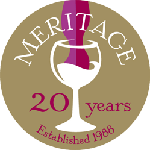
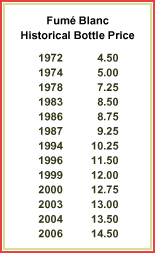 hackles go up, and blood pressure becomes elevated. We have got to be the last winery in California to finally take some price increases. These have been done very modestly and very very slowly (see chart). To be truthful, it is costing us way more to produce the quality of wines we are making today than in the past. Hundred year old vines, fancy French oak barrels, and pedigreed winemaking teams don't come cheap. But, we know we need to wow people with our quality in order to keep them excited. If we don't, there are another 987 wineries just down the road all vying for a piece of the action. Thankfully, our strategy is working. We're selling out of everything we make. We're getting great reviews and tons of accolades. And the tasting room is filled with folks from all walks of life who want to taste the new releases. But, somehow we need to become more profitable so we don't end up in the headlines like Chateau Montelena, Stags Leap and Rosenblum Cellars.
hackles go up, and blood pressure becomes elevated. We have got to be the last winery in California to finally take some price increases. These have been done very modestly and very very slowly (see chart). To be truthful, it is costing us way more to produce the quality of wines we are making today than in the past. Hundred year old vines, fancy French oak barrels, and pedigreed winemaking teams don't come cheap. But, we know we need to wow people with our quality in order to keep them excited. If we don't, there are another 987 wineries just down the road all vying for a piece of the action. Thankfully, our strategy is working. We're selling out of everything we make. We're getting great reviews and tons of accolades. And the tasting room is filled with folks from all walks of life who want to taste the new releases. But, somehow we need to become more profitable so we don't end up in the headlines like Chateau Montelena, Stags Leap and Rosenblum Cellars. 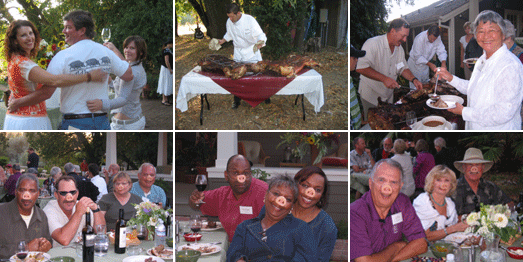
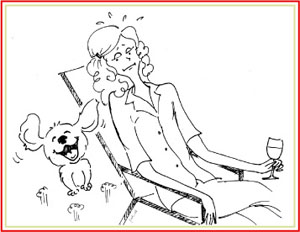 a new puppy! Yep, that's right. The family that doesn't have time to sit and smell the roses, let alone get through the inbox, emails, and voicemails, has added another dimension to the laundry list of responsibilities.
a new puppy! Yep, that's right. The family that doesn't have time to sit and smell the roses, let alone get through the inbox, emails, and voicemails, has added another dimension to the laundry list of responsibilities. 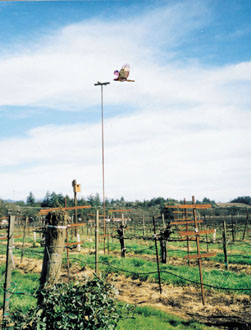 and credit here, as he was ahead of his time in an industry steeped in tradition. It wasn't easy to convince growers that these farm friendly practices were not only good for the earth but economically viable too.
and credit here, as he was ahead of his time in an industry steeped in tradition. It wasn't easy to convince growers that these farm friendly practices were not only good for the earth but economically viable too. 

